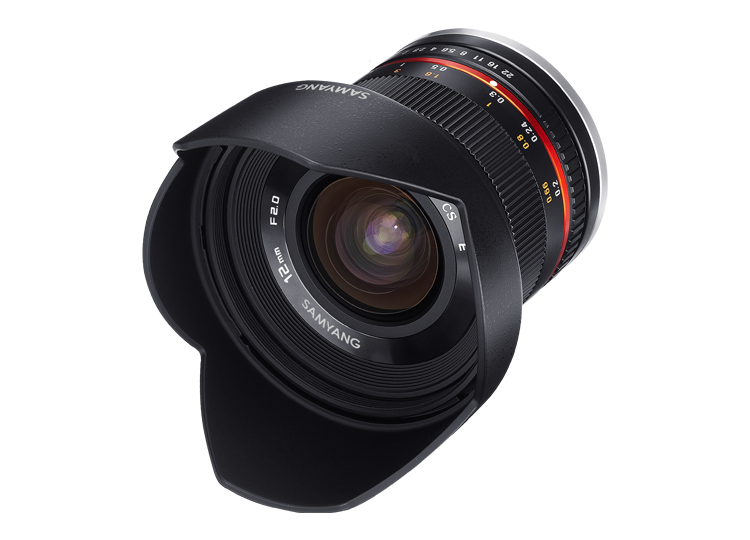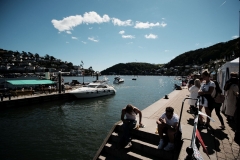5 Reasons why I love the Samyang 12mm f2 NCS CS Wide Angle Lens
The Samyang 12mm f2 NCS CS is an extra-wide-angle manual focus lens designed for APS-C crop sensor mirrorless cameras. With low distortion and wide angle, photographers who want wide-angle photos such as landscape and architectural images can create great images with very little effort. At F2.0 this lens is very bright so it captures clear and vivid images even in relatively dark environment.
There are 5 Reasons why I love the Samyang 12mm f2 NCS CS and why you should go out and buy one today.
- The Price: The lens costs peanuts – you can pick pne up today for around £170 GBP brand new, £100 – £125 GBP secondhand
- The Optics are Amazingly Bright: Given that this is a 12mm wide angle, fully manual lens, the optics are extraordinary good
- Incredibly Easy to Use: Photographers are often terrified at the thought of shooting in manual focus but set this lens on f5.6, focus on something 2 – 3 metres away and shoot all day, without ever having to refocus! It couldn’t get any easier
- The Colours it obtains are excellent: There is something about this lens that just works when attached to a Fuji camera. I love the colours you can obtain using the Fuji colour-science
- It’s Small & Light – Easily Portable
For the first time in Samyang Optics history, NCS (Nano Coating System) technology was used. It creates even lower reflection rates than the original UMC (Ultra Multi Coating) together with higher contrast. Also, the light penetration rate is very high to minimize flare and ghost.
Optical construction of Samyang 12mm F2.0 NCS CS features 12 elements in 10 groups – among the lenses, there are 1 aspherical lens(AS), 1 hybrid aspherical lens (H-ASP) and 3 extra-low dispersion lenses(ED) to provide high image quality. H-ASP minimizes color aberration to realize exceptional image quality and high contrast for center and corner of the image even when its aperture is fully opened. ED lowers unnecessary light dispersion to drop color aberration effectively. With such optical construction, it has 0.2m of minimum focal length.
There are 6 aperture blades designed to be almost as a full circle when aperture is closed which expresses starlike ray clearly and deep depth of field images.
The body of the Samyang 12mm F2.0 NCS CS is compact and solid since it is made of high-strength aluminum alloy. Amazing images can be captured even under the most difficult environments and the provided petal-shaped lens hood helps protect the lens from unnecessary light reducing flaring.
The Samyang 12mm f2 NMC CS is available for 5 camera mounts: Canon M, Sony E, MFT, Samsung NX, Fujifilm X
Let’s look at some examples
This first set of examples shows the practical usage of the Samyang 12mm f2 NCS CS for commercial real-estate photography. Although effectively an 18mm wide angle lens on the Fuji x-T1, the verticals are perfectly captured and there is almost no visable drop off in the corners. These are advertising ready images that are designed to sell!
This second set was taken during an outing to Dartmouth here in the UK. Again the distortions are minimal and the colours really pop.
All images taken using the Fujifilm x-t1 with Samyang 12mm f2. Images are straight out of camera (SOOC) with no additional processing. Recipe used was based on Classic Negative.
Like this article?
Why not spend a little more time with us and take a look at these interesting articles too.
- Fujifilm introduces the FUJIFILM X-T5
- Tether a Fuji x-series camera to your PC/laptop
- Absolutely Breathtaking Dartmoor National Park in Autumn
Want to see more images taken with the Samyang 12mm f2 NCS CS? Why not visit our sister site at https://www.pixtures.co.uk





































I have used the Samyang 12mm f2 a couple of times now on my Fujifilm x-t1 with extremely pleasing results. From the images I am getting SOOC it appears to have very little distortion, great colour rendition and good sharpness despite the fact that it is fully manual. Set it on f8 and you have a lens capable of attaining huge DOF with everything in focus from 1m to infinity. While there is the slightest of vignetting in the extreme corners, this is only noticable in certain situations, e.g. where you have a very bright blue sky. For the most part, the images look great from edge to edge.